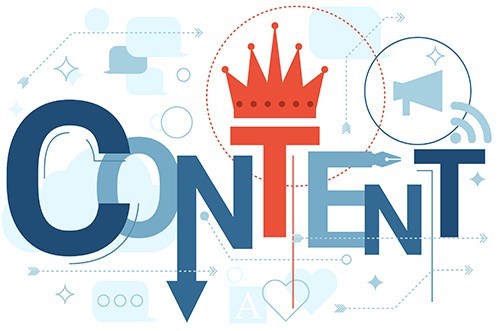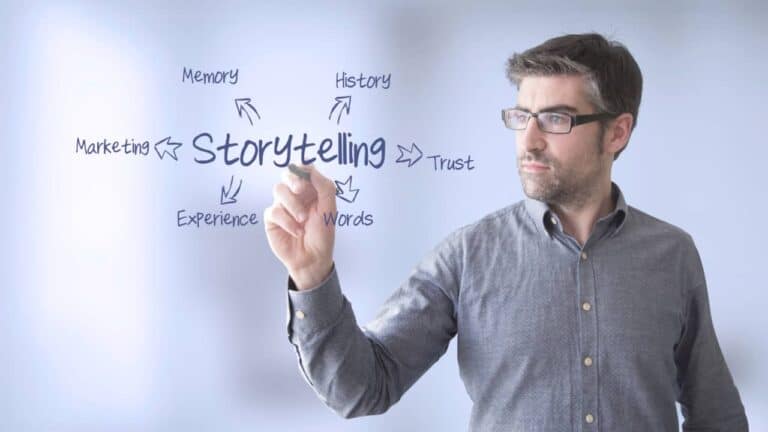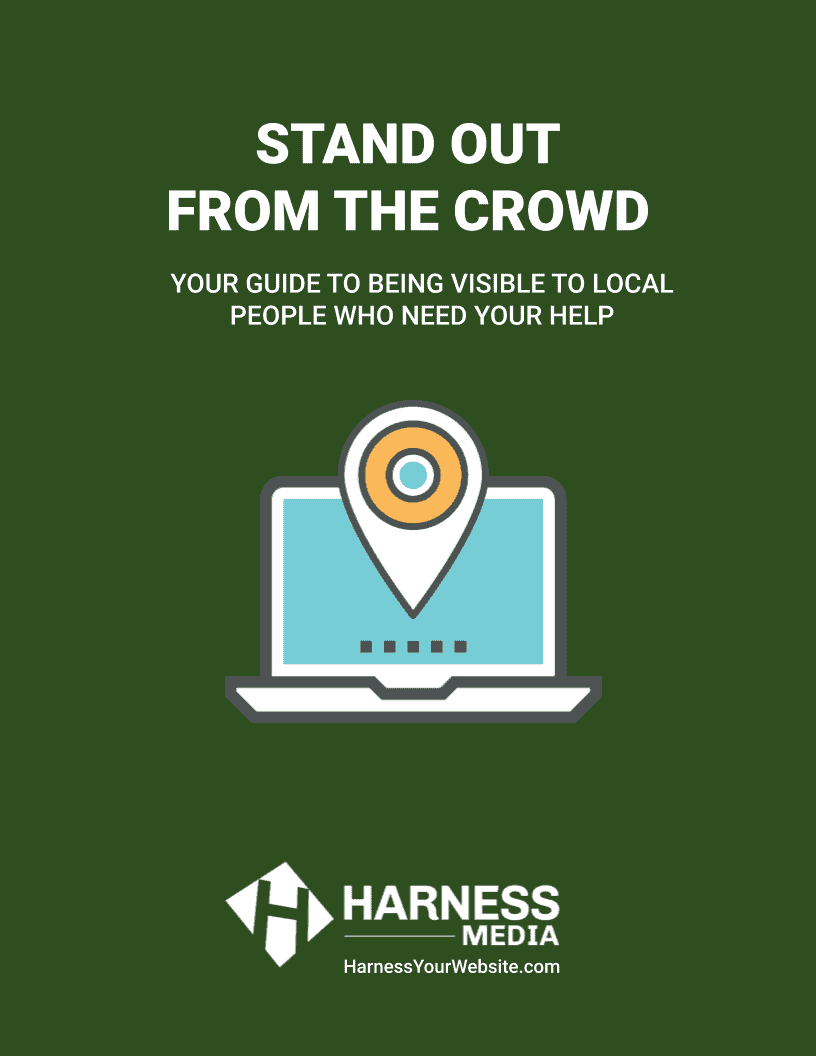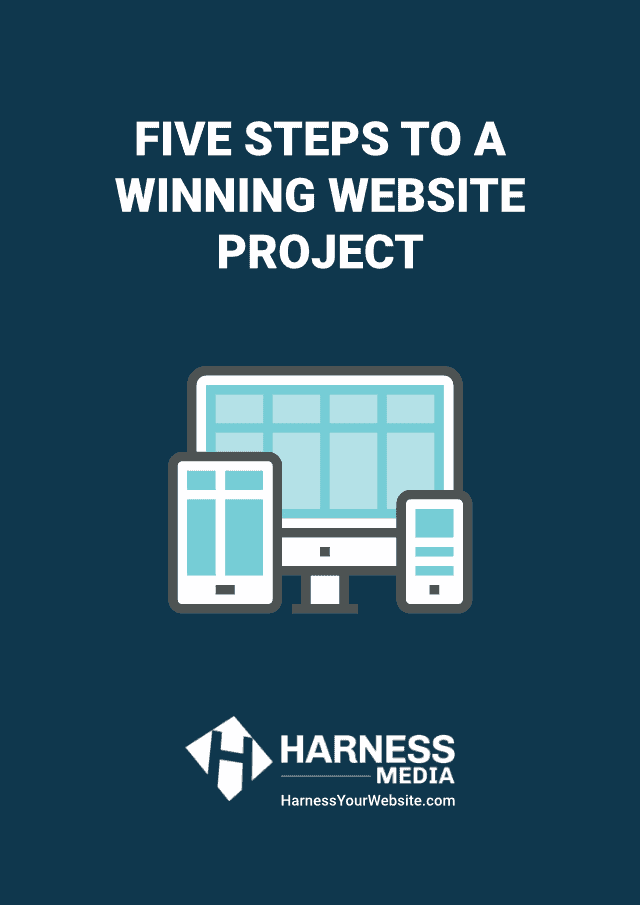The process of building a website can be a timely one, but it’s very important to consider the user experience. For every website built by Harness Media, we never begin with design. In fact, it is one of the last steps in the website building process. Truly effective web design focuses on the user, their needs, and how to get them to take action. To achieve this goal, we must focus on content first, so we can lay the groundwork for the pages, navigation, and overall structure of the website.
What is content?
Before we go any further, we need to be clear about what information is considered to be website content. In a nutshell, content consists of written text and various forms of media. Textual content might be paragraphs that describe your business history, information about the products and services, team biographies, informational articles, and more. Media content refers to images, photos, or videos that help your customers understand what you do and how you can help them. Good content combines text and media to help your visitors best understand what you do, how you do it, and why they need you.
Content is King

No one visits your website just to look at the design, unless they are a web designer themselves. Even then, it is the content that drives them to your website in the first place. Think about that for a moment — when you search a topic on Google, is there an option to filter the results based on beauty?
Of course, design is a critical piece of the website. But you need good content in order to attract visitors. Once they have arrived at your website, it is then, and only then, that you must capture their attention. This is a combination of your content and good design elements. Ultimately, however, it is the information that brought them to you in the first place.
For these reasons, it’s important for the web designer to have your content before designing your website.
Let’s say you have just sold 100 strawberries to a customer over the phone. When they arrive to pickup the order, the container you have for them only holds 20 strawberries. Will they care how fancy the container is when they realize that they can’t take all the strawberries home? Probably not.
Design is still critical
As stated above, good design remains important in the overall scope of the project. The website needs to provide a great presentation of the content that helps to convey the intended message and keep visitors interested. But we cannot design the website without knowing what is being presented. It allows us to determine user-friendly navigation, create calls-to-action, and achieve the overall goal of converting visitors into customers.
Stages of content creation
Because Harness Media uses content focused design, we cannot start on the design process until we have content. When you arrive at a point where you realize you need a website, you’ll find yourself at one of the following stages:
- You have no content and haven’t even begun to think about it. You just know you need a website. You might even be thinking that you need a place to put it first.
- You have put some level of thought into your content and how you might want it displayed on your website. But you haven’t actually put it into words yet.
- You have already written drafts of your content. You might also have some appropriate photos or videos.
- You have an existing website with content, but it is outdated or needs help.
- You have prepared all of your content and ready to have it designed into a website. This is VERY rare.
In order for the design process to start, you need to be at stage 3 or better. This includes written text and other media.
Let’s be honest — it’s not easy to get to stage 3. It takes work on your part and requires large chunks of time. You have to think about the actual content without thinking about design and layout. Put your efforts solely into writing your company history, your business goals, the products and services you provide, your team, and any other relevant information that you can convey in writing and photos. Write it like you are writing an article for a magazine.
Think about the things you know you need to think about, but just haven’t done yet. Focus on your goals and where your business is heading. Start by writing down simple lists about where you want your business to go, who your audience is, and where you see yourself (and your business) in the future; think long-term. Once you’ve created these lists, incorporate those items and keywords into paragraphs. Provide your designer with the lists and the paragraphs.
You may learn a few things along the way and this information might help you in other ways, such as developing a business plan. You may find this to be difficult at first, but a good business coach will tell you that this process is something you should do anyway, with or without a website.
Technical benefits of content focused design
- Fewer frustrations: Writing content before design reduces frustration for everyone involved in building your website. Attempting to create content within a confined space can be irritating and time-consuming. Writing freely without those restrictions is much easier and requires less revisions.
- Fewer design revisions: When design is conducted prior to receiving content, it usually creates the need for design revisions when the content is received or changed later. In a best-case scenario, it may require minimal design adjustments — but most often it creates the need for more extensive design updates that adds to the overall cost of the project. In some cases, it may require rethinking the entire design. Content before design means less revisions, less unexpected extra costs, and higher efficiency.
- Customized layout: When designs are based on content, the designs become more unique. Content provides the designer with insight to your goals and the exact amount of content to be included. The content will be presented properly on devices of all sizes, with proper navigation, and for maximum conversion of customers.
- Long term benefits: Your content gives your designer insight into your goals and direction, giving your website better longevity. A good designer will consider your future and build your website to accommodate some flexibility to keep your website relevant for the long term.
Don’t want to write your own content?
Harness Media can help! We work with local content copywriters, photographers and videographers that can develop content to best serve you and your customers. Alternatively, you can hire your own professionals and simply forward the generated content to us. A professional content copywriter will typically interview you, research your industry, and consider any content you may already have to prepare new, search engine friendly content.







